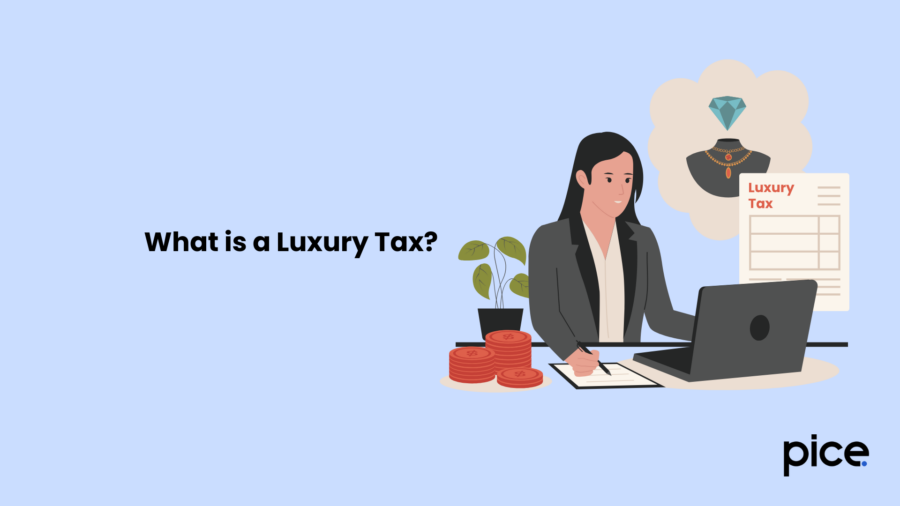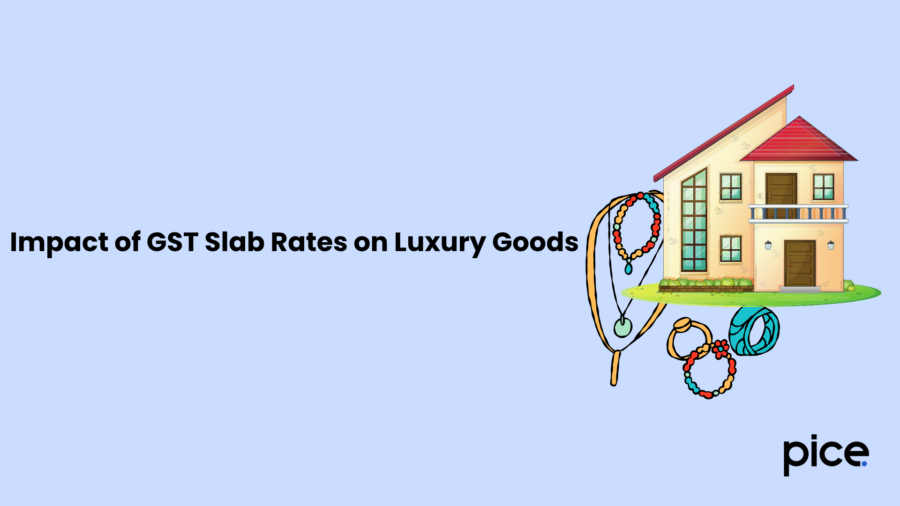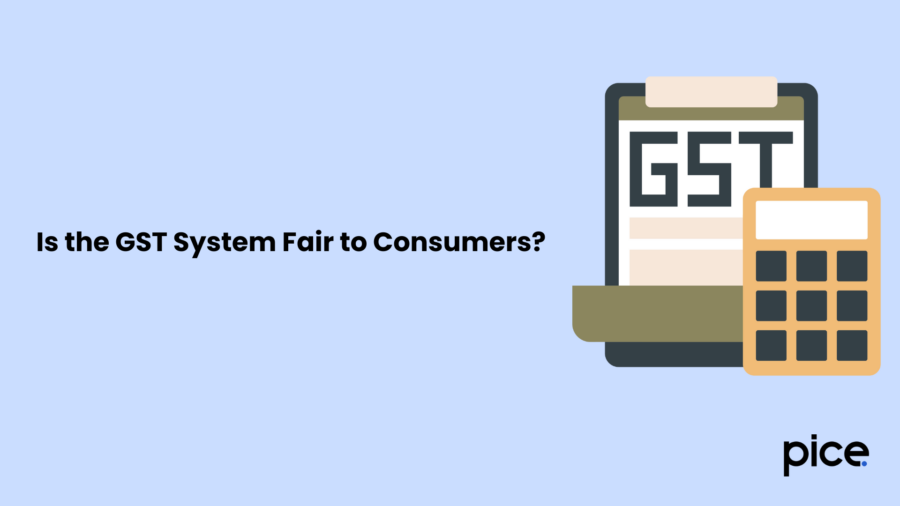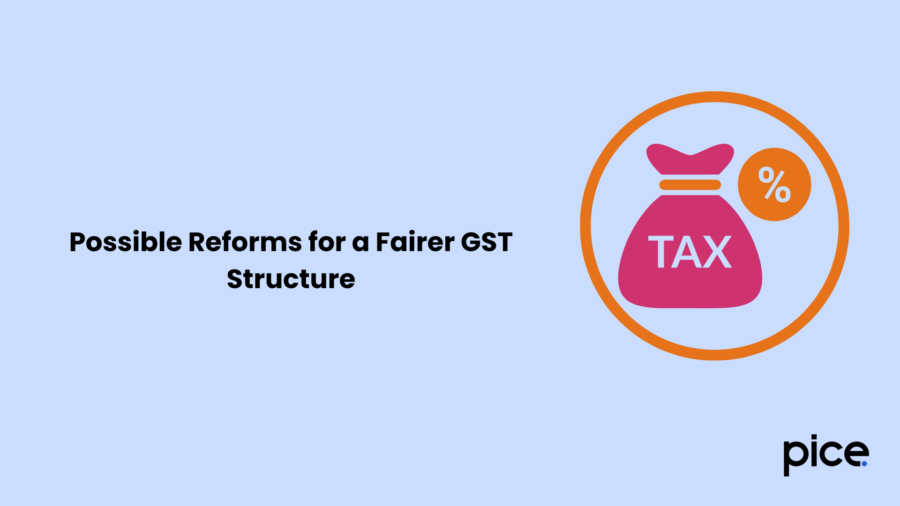Impact of GST on Luxury Goods: Key Highlights
- 24 Jun 25
- 13 mins

Impact of GST on Luxury Goods: Key Highlights
Key Takeaways
- GST has introduced a structured slab system, with luxury goods taxed at the highest rate of 28%, plus cess for specific items.
- This high taxation discourages luxury consumption but also creates affordability issues and market imbalances, especially for middle-income groups.
- Hotel stays, luxury properties, premium vehicles, and tobacco products face the brunt of luxury taxation, impacting tourism, housing, and consumer demand.
- Arguments against current GST rates highlight misclassification of semi-essential items and failure to effectively tax ultra-rich individuals.
- Reforms like slab reduction, lower median rates, and improved tech infrastructure are crucial to make GST more equitable and economically viable.
Since its implementation on July 1st 2017, GST has been a significant policy in India. The government has categorised items into several groups, distinguishing between essential basic necessities, standard goods, consumer products, and luxury goods. This categorisation is a crucial aspect of the GST policy, particularly as it separates non-luxury category items into the essential category.
This article will delve into the comparison of these two categories, focusing on the fairness and the profound impact of GST on luxury goods. It will also provide insights into the factors that support the current GST slab rates and those that do not. Lastly, it will explore the categories of hotel accommodation, luxury properties, luxury cars, and cigarettes and tobacco products and propose necessary reforms.
What is a Luxury Tax?

The concept of luxury tax under the Goods and Services Tax (GST) framework in India refers to the taxation of goods and services considered to offer comfort, enjoyment, or indulgence beyond basic needs. Initially, the definitive taxation structure was introduced in 1996, mainly targeting the hospitality industry, but there was no standardized rate across the country. With the implementation of GST in 2017, luxury taxation was streamlined under a unified system.
Luxury goods and services are now placed in the highest GST tax slab of 28%. This category typically includes high-end restaurants, luxury hotels, spas, health clubs, beauty salons, and similar services. The GST regime brought clarity and uniformity in taxing luxury products, replacing the earlier fragmented system of luxury tax levied by individual states.
As a result, the GST structure and the impact of GST on luxury goods has improved compliance, simplified tax filings, and created a more transparent and efficient tax environment for luxury service providers and consumers alike.
GST Slab Rates
The GST Council sets tax rates for different goods and services under the Goods and Services Tax (GST) system. The GST system comprises five main slabs, each of which covers a specific category of items listed below:
1. 0% Slab for Essential Items
The government does not charge GST on essential goods, which people use daily. This slab includes things like milk, eggs, bread, fresh fruits and vegetables, sanitary napkins, and bangles. The goal of this category is to keep these basics affordable for everyone.
2. 5% Slab for Common Household Needs
This is one of the lowest GST rates. It applies to daily-use items that are slightly more processed but still essential. This slab includes tea, sugar, spices, domestic LPG, and life-saving medicines. Even clothing under ₹1,000 falls into this category to keep basic wear accessible.
3. 12% Slab for Processed Food and Mid-Range Goods
This slab covers a mix of food items and household goods. The government taxes items like ghee, butter, cheese, frozen meat, fruit juices, incense sticks (agarbatti), umbrellas, and colouring books at 12%. It also includes hotel stays with tariffs up to ₹7,500 per night, making mid-range travel more affordable.
4. 18% Slab of Standard Rate for Most Goods
This is the most widely applied GST rate. It covers a broad range of items such as biscuits, pasta, ice cream, mineral water, notebooks, and cornflakes. It also applies to luxury hotel stays where the per-day tariff exceeds ₹7,500. People often use these items, but the government don’t consider them basic necessities.
5. 28% Slab for Luxury and Sin Goods
The highest luxury tax rates target luxury and sin products. They apply to cars, air conditioners, refrigerators, and other luxury electronics. The government also uses this slab to discourage the use of cigarettes, gambling services, and casino activities. Some of these items even carry an extra cess for added taxation.
Besides the main slabs, GST also includes special rates. The government applies 0.25% to rough precious stones, while it charges 3% on items like gold, diamonds, and other precious metals. It tailors these rates for specific, high-value items.
Impact of GST Slab Rates on Luxury Goods

The Goods and Services Tax (GST) on luxury goods is set at 28%. The central government's intention behind this high tax rate is to discourage the consumption of non-essential products and services. Additionally, these rates are designed to ensure that wealthier individuals contribute more to government revenues than others.
However, the rationale behind these rates did not take into consideration the following:
1. Price Disparity
The 28% tax slab has a negative impact of GST on luxury goods, as the prices of products increase significantly. This creates a price gap between the lower-income and higher-income markets. Due to this, products like televisions, luxury hotel stays, and air conditioners are far more expensive in India, and only a specific category of people are able to invest in them.
As a result, consumers often turn to foreign markets or delay their purchases. This eventually leads to a mismatch in pricing that disadvantages Indian manufacturers and sellers.
2. Reduced Affordability
Another impact of GST on luxury goods being high is that it makes once-accessible goods out of reach for middle-class consumers. Items like cement, large TVs, or even hotel bookings have become unaffordable for many.
Despite being marked as luxury items, these goods often serve everyday functions today. So, a high tax pushes essential goods away from people with average income level who are trying to improve their standard of living. From a higher perspective, this can create an economic crash in the Indian markets along with high inflation.
3. Discouraged Consumption Patterns
This is another interconnected impact of GST on luxury goods. When the cost of non-essential items rises due to high GST, people naturally cut back. Demand for luxury goods drops sharply, which forces companies to cut production, leading to job losses. Industries like tourism and electronics see fewer buyers, and the government collects less tax than expected. So, instead of boosting revenue, the high tax discourages economic activity and hits livelihoods hard.
GST Rates on Luxury Items
The GST rate on luxury items impacts different product and service categories differently. They are discussed in detail below:
1. GST Rate on Hotel Accommodation
Hotel room prices are taxed based on their tariff. There are no GST charges for stays under ₹1,000, 12% for mid-range rooms, which range from ₹1,001 – ₹7,500, and 18% for luxury stays above ₹7,500.
The impact of GST on luxury goods becomes clear here, as high-end accommodations are heavily taxed. This can make Indian destinations less competitive compared to cheaper foreign options.
2. GST Rate on Luxury Properties
The GST rate for properties over ₹45 lakh is 5%, without any input tax credit benefit. In contrast, affordable housing below ₹45 lakh enjoys a 1% GST rate.
This approach reflects the impact of GST on luxury goods, where premium properties bear higher taxes to promote affordable housing and reduce speculative investments in upscale real estate.
3. GST Rate on Luxury Cars
High-end cars attract 28% GST and an extra cess of 15–22%, depending on engine size and features. This brings the total tax close to 50%.
The impact of GST on luxury goods is powerful in the automobile sector. These high taxes significantly raise prices and reduce the accessibility of premium vehicles.
4. GST Rate on Cigarettes and Tobacco Products
Cigarettes and tobacco products are taxed at 28% GST. A steep compensation cess is also added to this, bringing the total tax burden to over 50%.
This high rate illustrates the impact of GST on luxury goods classified as "sin items." GST is aimed at reducing the consumption of harmful luxury goods while generating substantial revenue for the government.
Is the GST System Fair to Consumers?

GST benefits the government and people of India; however, it also raises some challenges. Several arguments support and oppose the current GST slab rates. The impact of GST on luxury goods is hence subject to the advantages and disadvantages provided by the taxation system.
1. Arguments in Favor of Current GST Slab Rates
The advantages and positive impact of GST on luxury goods and other essential goods favour the current GST regime and slabs. These are as follows:
I. Lower GST on Maximum Essential Goods
Most of the essential goods in India are outside the taxation system. Items such as milk, fruits, vegetables, and more are not considered for GST, making them more affordable to the economically weaker sections. This also protects them by unifying the whole taxation system under the umbrella of GST.
II. Higher Contribution of Wealthier Population
The impact of GST on luxury goods was much more significant than on any other items. Since goods are mostly accessed by the rich, this increases the rich's contribution to Indian taxes, which puts less pressure on the economically weaker section of society.
III. More Government Initiatives
Higher taxes collected by the Indian government result in increased government initiatives and infrastructure projects. The government funds projects, such as the National Infrastructure Pipeline (NIP), which contributes to the country's progress.
The government plans to progress the country using tax revenue. These points support higher rates and development from the supporters' perspective.
2. Arguments Against Current GST Slab Rates
The current GST on luxury goods also brings specific negative impacts to the customers that are discussed below:
I. Higher GST Slab Rates for Some Essential Goods
The government is increasing the financial burden on middle-class people by categorising some essential items for higher taxes. The latest GST regime taxes items such as pens, packing containers, and more at 18%. This makes essentials out of reach for economically weaker sections.
II. Inconsistent Classification of Items
The GST slabs do not consistently classify items. For instance, cement is in the 28% GST tax bracket, making it a luxury item. This increases the costs of construction, adding to the unaffordability of the current house construction industry.
III. Inability to Tax very high-net-worth individuals
The top 1% of India's population owns 40.1% of the nation's total wealth and controls 22.6% of national income. This indicates the economic divide in the country, shedding light on the inability to tax the super-rich population. Critiques have proposed the introduction of wealth and inheritance tax.
These points reflect the inequity of current tax slabs for the numerous economic categories of the Indian population. Thus, they outline the areas that need reforms in the current GST regime.
Possible Reforms for a Fairer GST Structure

The points suggested below will make the GST structure fairer and have a better impact on luxury goods and essential goods.
1. Reduction of the Number of Tax Slabs
Ideally, having just two or three slabs is enough, and most countries follow the same. This also helps reduce confusion. Basically, for necessary items, there should be one rate and a median rate for others.
The impact of GST on luxury goods has made them out of reach for many in India. Clubbing them with 'other items', not segregating them, and subjecting them to higher tax rates will also boost their consumption and standard of living in the country.
2. 12% Median Rate Instead of 18%
The median rate for goods and services should be reduced to 12% from 18%. This will reduce the tax burden on the poor. Moreover, a lower tax rate will lead to a fairer system with fewer compliance challenges.
Several countries, such as China, Australia, Canada, and others, have kept the rates lower. Despite this, they collect higher tax returns from their citizens. This indicates the added benefit of higher tax collection that can be used by the government.
3. Improvement of Technology Use
GST online portal often faces technical glitches. To reduce this, technology should be used more effectively. Moreover, AI can also provide real-time analytics to policymakers for improvement.
The government must maintain high cybersecurity despite encouraging the use of advanced technology. Tech experts need to be consulted to do this, which will protect the sensitive data of the country's taxpayers.
Conclusion
Overall, the GST regime in India has brought transparency and uniformity, especially in differentiating essential and luxury goods. However, the fairness of this system remains debatable as per individual preferences. While it helps protect low-income groups by exempting or lowering taxes on necessities, the steep rates on luxury items may hinder economic growth and consumer access.
Disproportionate classification and high taxation on some semi-essential items also pose challenges. To make GST more equitable, reform is necessary, such as rationalising tax slabs and enhancing technology use. A balanced, inclusive approach can ensure GST serves both revenue needs and consumer welfare effectively in a growing economy, thus keeping the impact of GST on luxury goods in control!
💡If you want to streamline your invoices and make payments via credit or debit card or UPI, consider using the PICE App. Explore the PICE App today and take your business to new heights.
 By
By 

















